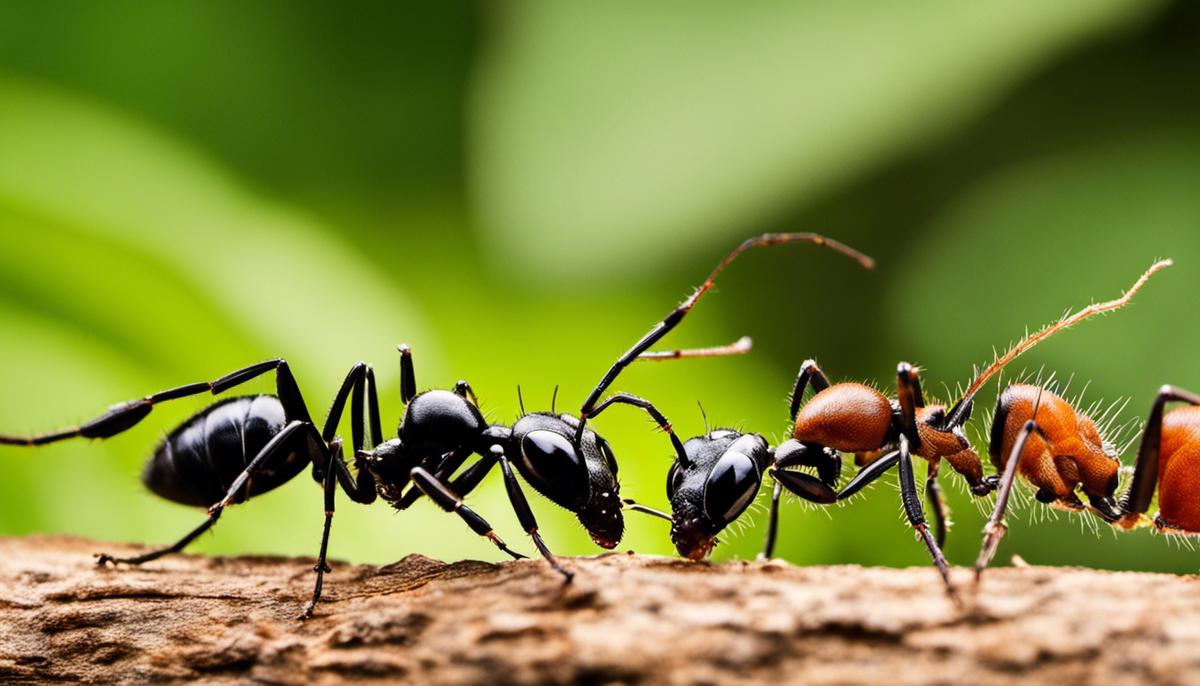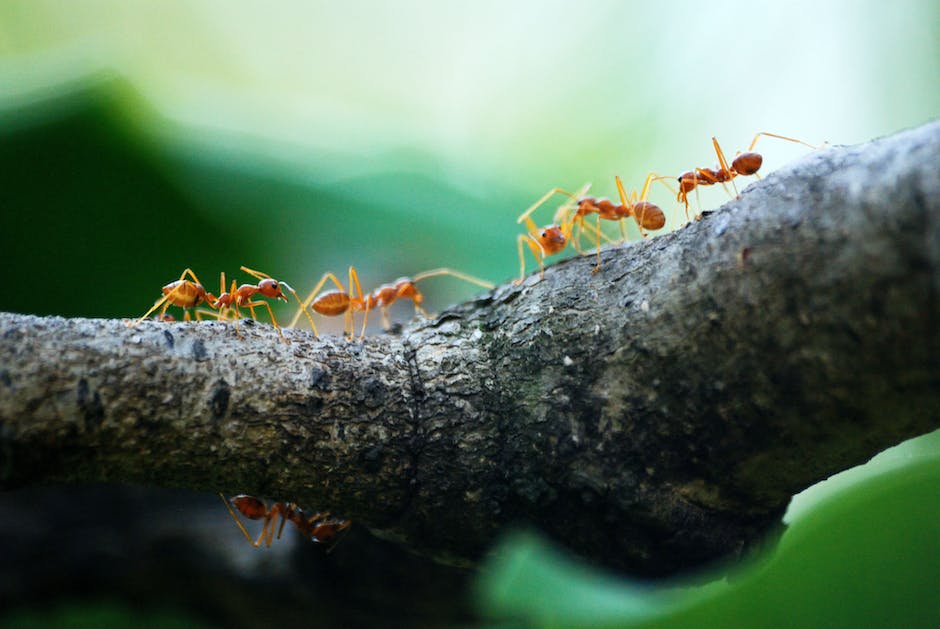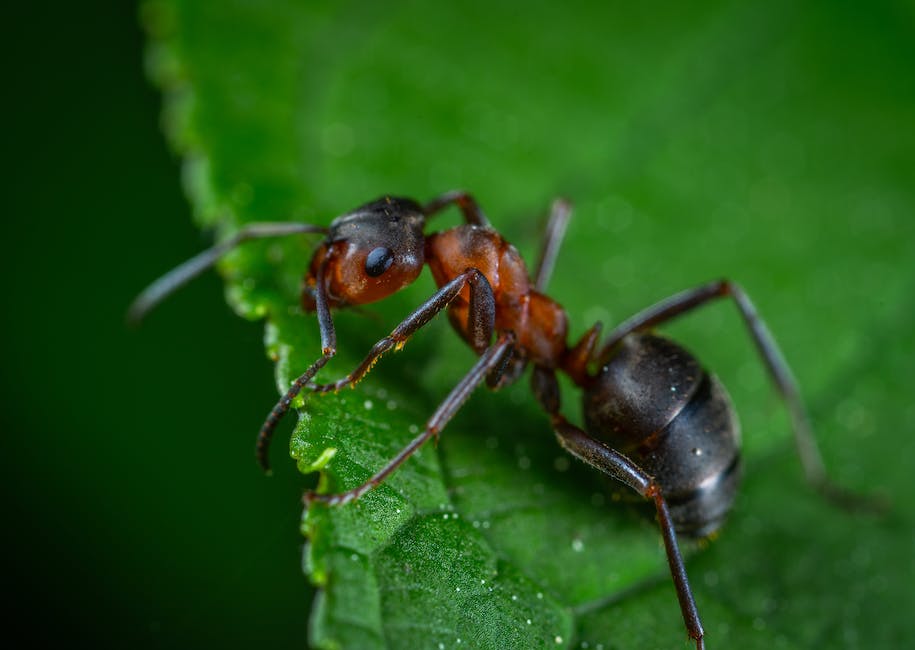Eradicating Ants from your Garden Effectively

Managing an ant infestation in the garden can be a challenging endeavor. However, with the correct knowledge and a coherent plan of action, it is possible to effectively control these small, persistent pests. A key aspect of this strategy is understanding the various types of ants that might be present in your yard. Different ant species exhibit distinct behaviors and preferences, which can greatly influence an effective extermination strategy. In addition, it’s always better to try natural control methods first, which can involve using certain plants, essential oils, and household products. However, if natural methods fail to reduce the ant population, there might be a need to resort to ant baits and pesticides. The safe and effective application of these products is paramount to mitigate potential hazards to other wildlife and the environment.
Understanding types of ants
The Tiny Garden Invaders: Commonly Found Ants
If you’ve taken on a green thumb lifestyle and love spending time in your garden, you’ve probably spotted a few ants scurrying around your blooming roses or climbing up your fruit tree. These busy workers, while fascinating to watch, might prove a bit pesky or even harmful. Understanding the most common types of ants you might find in your garden will help manage their presence and ensure your plants continue to thrive.
Let’s pull up our gardening gloves and delve into the world of ants.
First on our list is the Carpenter Ant. Nothing beats the size of a Carpenter Ant. They’re easily identifiable by their large bodies, which can measure up to ½ inch, and their dark brown to black color. These ants may be a beauty to behold, but beware! They’re known for causing significant structural damage by burrowing tunnels through wood to build their nests. However, if you commonly spot this type of ant in your garden, it’s not a guarantee that they’re damaging your home’s wooden structure. They simply appreciate the peaceful haven your garden provides.
Next, we encounter the Field Ant. These tiny workers are smaller than the Carpenter Ant and come in various colors from red to brown and black. Field ants are probably building small mounds all over your turf. These ants generally aren’t harmful but can become quite a nuisance when their population multiplies.
Then there’s the Little Black Ant. Just as their name suggests, they are petite creatures and black. You’ll notice them happily trailing along your garden paths and outdoor picnic areas. They’re particularly drawn towards divinely sweet materials, so ensure to keep your summer desserts well-guarded.
Don’t forget the Pavement Ants that build their colonies under rocks, pavements, or the foundation of our houses. They’re the common invaders at BBQ parties, attracted by sugars and proteins. Pavement ants are typically dark brown to blackish and do not pose a significant threat to your garden plants.
Finally, the Argentine Ant is another type we can’t neglect. These ants are usually brown and are infamous for their huge colonies. If you spot ant trails on your plants, it’s likely to be these Argentinian natives. Unfortunately, they affect the garden’s ecosystem by fostering pests like aphids or scales.
Understanding the types of ants in your garden places you in a better position to manage them. Remember, not all ants are detrimental; they contribute to soil aerification and control other pests. However, if your garden is struggling because of an ant infestation, it might be time to reach out to a pest control expert. It’s all about keeping the perfect balance for our gardens to thrive. Embrace the journey of being in tune with nature and happy gardening!

Natural ant control methods
“Harnessing Natural Solutions: Ant Control in Your Garden”
There’s no denying that a well-tended garden brings immense joy to a family household. The vibrant colors, inviting scents, and gentle rustle of leaves – it’s pure magic! But, every gardener knows this delight comes with its fair share of unwelcome guests. One such intruder that often buzzes under the radar is ants. We’ve already discussed common varieties such as Carpenter ants, Argentine ants, and Pavement ants. Now, it’s time to step into the world of natural remedies and see how they can help manage these tiny invaders.
The beauty of natural methods is that they are environmentally friendly, safe for your loved ones, and still give effective results.
Starting with something as simple as cinnamon! Sprinkle ground cinnamon around the areas where you’ve noticed ant activity. The strong smell disrupts their scent trails, causing them to look elsewhere for food and shelter.
Another potent elixir is vinegar. Mix equal parts water and white vinegar into a spray bottle and direct it at the ants’ access points. The vinegar’s sharp scent effectively throws them off their usual trail. Don’t worry about the vinegar aroma; it dissipates once it dries.
If you fancy getting creative, concoct an essential oils blend. Ants are particularly deterred by peppermint, clove, and citrus oils. A few drops in a cup of water, gently spritzed wherever ants are congregating, proves significantly effective. As a bonus, your garden will carry a calming fragrance.
Diatomaceous earth, a powdery substance made from fossilized aquatic organisms, is another safe bet. This all-natural powder kills ants by dehydrating them. Sprinkle this around plants, or wherever you see ants, for a non-toxic yet highly efficient remedy.
Next up are ant-repelling plants, a more aesthetically pleasing yet equally efficient solution. The trick is to grow plants that ants find unpalatable. These include lavender, rosemary, mint, and thyme. Not only will these plants deter ants, but they’ll also perk up the ambiance of your garden.
Lasty, if you have a serious ant infestation, remember that it’s okay to seek out professional help. Share your preference for natural, non-toxic methods. A qualified pest professional can guide you to an ecologically safe solution that caters specifically to your garden’s needs.
Keep in mind, though, ants do play a critical role in the ecosystem. They help control other pests, boost soil health, and aid in composting. Consider if it’s a full-scale invasion or just a small troupe going about their day. Knowing when to control and when to coexist makes all the difference.
In embracing natural methods, you safeguard your garden and, by extension, your household. Approach it with patience, creativity, and the understanding that harmonious living involves a bit of give and take. Happy gardening!

Using ant baits and pesticides
In the grand scheme of things, the next crucial step to managing household pests, particularly those pesky ants, is understanding how to properly use ant baits and pesticides. While you may be eager to immediately wipe out an entire colony, note that an effective strategy involves a calculated approach that doesn’t harm the ecosystem or your loved ones in the process. So, with your passion for making and maintaining a harmonious home, let’s take a closer look at how these methods work.
Firstly
,with so many different ant baits offered at your local store, choosing the right product can feel overwhelming. Ant baits typically come in granules, gels, stakes, or stations and may contain different active ingredients. The trick here is finding one that your type of ants prefer. The earlier sections of this discussion, where we dove into different ant species, will certainly come in handy here. Remember, different ants have different tastes. This is why it is so essential to positively identify your invaders.
Once you’ve identified the type of ant and purchased the appropriate bait, then comes the fun part—outsmarting the ants. Place the bait near where you’ve observed ant activity but avoid putting it directly in their path. We want our little intruders to discover these ‘treats’ themselves. Once the worker ants bring the bait back to the nest, it eventually kills off the entire colony, including the queen. Mission accomplished!
Now, let’s be clear here. While you might have the urge to spray pesticides at the first sight of an ant, this ‘rambo’ approach may not be the best long-term solution. Aerosol pesticide sprays can indeed kill visible ants on contact and may deter other ants from coming out of their nest, but they seldom fully eliminate the infestation. In fact, this approach can frequently make things worse by causing what is called ‘budding,’ where the colony splits into multiple new colonies.
However, pesticides can still serve a purpose when used properly and cautiously. They are ideal for creating a barrier around your home to prevent ants from getting inside. The Environmental Protection Agency (EPA) has made strides in ensuring today’s homeowner pesticides are safer than ever. Buyer beware, always read and follow label instructions to ensure you’re not causing more harm to your family or the environment.
A slow, yet sure approach goes hand-in-hand with patience when it comes to ant baits and pesticides. It may take a few days or even weeks to significantly dent the ant colonies, but rest assured, your efforts will pay off.
Your home is a sanctuary for your family, pets, and lovely plants. It’s our mission to ensure it remains just that and doesn’t turn into an ant theme park. As always, remember that if your DIY pest control feels like it’s getting out of hand, it might be best to call a professional pest control service. They’re equipped with not only the tools, but the knowledge to effectively and safely rid your home of ant infestations.
So dear reader, as you embark on this journey, remember to arm yourself with knowledge, patience, and environmentally-conscious methods. After all, every aspect of homemaking, even pest control, can be done with love and care. EMBRACE YOUR ANT-VENTURE!

From exploring the wide range of ant species to understanding the use of organic deterrents and learning the correct application of ant baits and pesticides, you’re now equipped with the knowledge to tackle your ant problem head-on. Whether you opt for natural control methods, or you find it necessary to resort to the use of ant baits or pesticides, the key to successful ant control lies in understanding their behavior. With this knowledge, you can create an environment that is less attractive to ants, thereby reducing their numbers and minimizing their impact on your garden. Remember, while ants may seem like a nuisance, they play a vital role in our ecosystem, and the aim should be control, not eradication. Happy gardening!



